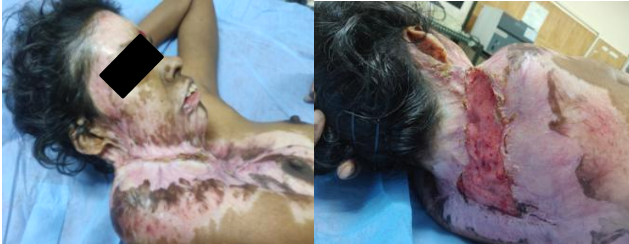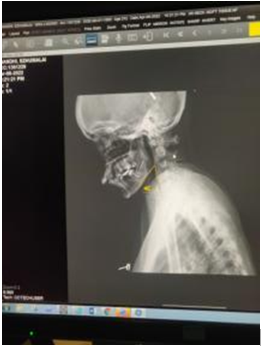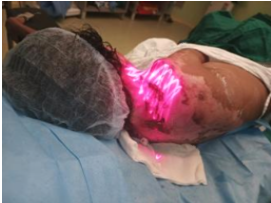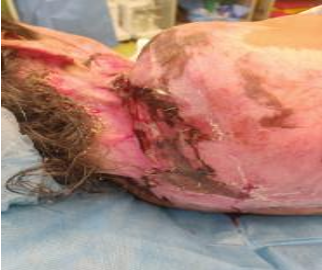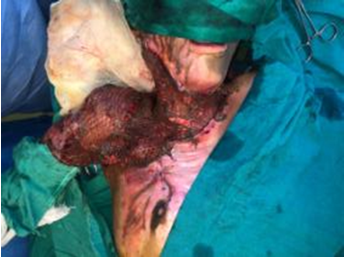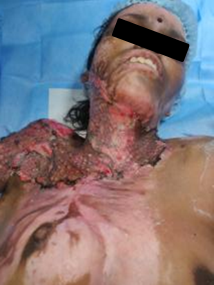Introduction
Unfortunately, the head and neck area remains the most frequently affected anatomic area involved in burn injuries.[1] The resulting disfigurement because of scarring, and especially the often-developing contractures, may severely limit the patients functional and social rehabilitation.[2] As such, the ultimate goals of post burn reconstruction have virtually remained unchanged in that the ideal reconstruction, includes aggressive and complete release of all contractures and replacement with tissue of matching quality compared with the remaining face and surrounding areas. Although doing so, adhering to the principles of reconstructing the facial subunits should always be considered.[3] especially, the neck with its propensity to develop severe contractures and its aesthetic importance, deserves utmost attention.[4] Skin grafts remain a valuable weapon in the reconstructive surgeon’s armory, for example, in addressing post burn contractures or defects on the face, neck, and dorsum of the feet. Full thickness skin grafts (FTSGs) are favored over split-thickness grafts principally due to lower recurrent contracture rates and better color match.[5] However; achieving good graft take in large defects is difficult, particularly when the surface is not flat, such as on the neck or cheek. Graft loss leads to recurrent contracture formation, in addition to pigmentary disturbances. Survival of a skin graft on its recipient site relies not only on a clean and well-vascularized bed but also on adequate immobilization with no infection, hematoma, or serous collection beneath the graft. In this study we are sharing our experience of post burn neck contracture associated with non-healing ulcer in which first skin grafting was done for ulcer & then release of contracture & skin grafting was done.
Results
Split thickness skin graft took up well both at non-healing ulcr and contracture released site ([Figure 5], [Figure 6]). No complications were noticed in the post operative period. Patient was discharged & being followed up every monthly.
Discussion
Achieving good functional and aesthetic outcomes when treating severe post burn head and neck contractures, remains a challenging task. Simple release of contractures followed by large area skin-grafting can be considered. Full thickness skin grafts (FTSGs) are favored over split-thickness grafts principally due to lower recurrent contracture rates and better color match.[5] However, achieving good graft take in large defects is difficult, particularly when the surface is not flat, such as on the neck or cheek. Graft loss leads to recurrent contracture formation, in addition to pigmentary disturbances. Survival of a skin graft on its recipient site relies not only on a clean and well-vascularized bed but also on adequate immobilization with no infection, hematoma, or serous collection beneath the graft. Split thickness skin graft is versatile and can survive on areas where FTSGs cannot, especially on areas of high mobility such as the head and neck. The advantages of FTSGs over split thickness grafts have been well described.[6] FTSGs result in soft, pliable skin with minimal contraction, as well as allowing mobility over joints and animated areas.[7] and they are also more functional, allowing hair growth, sweat, and sebaceous secretions and sensation. The texture, contour, and pliability result in a more favorable cosmetic appearance. However, FTSGs have been advocated with caution to resurface large defects as take rates are not as reliable as split thickness skin grafts.[8] Irregular takes results in recurrent contractures, patchy pigmentation, and poor cosmetic appearance.
Conclusion
In cases of contracture associated with non-healing ulcers, it is advisable to do skin grafting first for non-healing ulcer to avoid spread of infection at the site of contracture release.
Conflict of Interest
None.
References
- J K Prasad, ML Bowden, PD Thomson. A review of the reconstructive surgery need of 3167 survivors of burn injury. Burns 1991. [Google Scholar]
- K Kobus, J Stepniewsky. Surgery of the post-burn neck contractures. Eur J Plast Surg 1988. [Google Scholar]
- F C Tsai, S Mardini, DJ Chen. The classification and treatment algorithm for post-burn cervical contractures reconstructed with free flaps. Burns 2006. [Google Scholar]
- R F Edlich, LS Nichter, JA Persing. Burns of the head and neck. Otolaryng Clin North Am 1988. [Google Scholar]
- A Raynell. The secondary contractory tendencies of free skin grafts. Br J Plast Surg 1952. [Google Scholar]
- C E Paletta, JJ Pokorny, P Rumbolo, ed. Plastic Surgery 2nd ed. Philadelphia: Saunders Elsevier. Skin grafts. 2006. [Google Scholar]
- N D Rhodes, SJ Southern. Three-dimensional skin-graft contraction in full-thickness grafts. Br J Plast Surg 2001. [Google Scholar]
- P Gingrass, WC Grabb, RP Gingrass. Survival of full-thickness skin grafts over avascular defects. Plast Reconstr Surg 1980. [Google Scholar]

